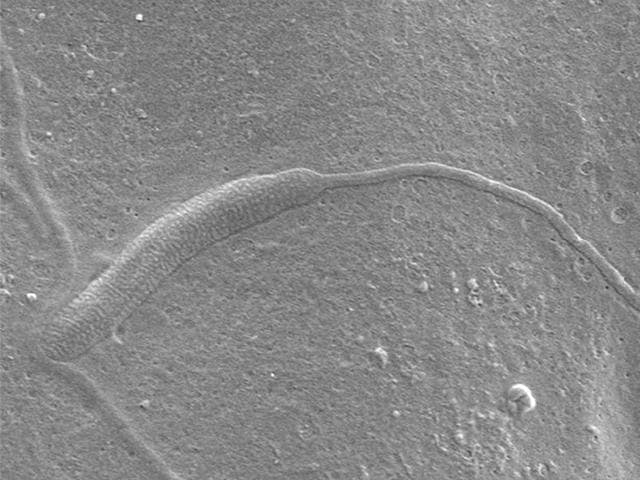Scientists accidentally stumble upon world's oldest sperm
Scientists have discovered a 50mn-year-old fossilised sperm in Antarctica representing the oldest fossil animal sperm yet known, according to a research article published in the Royal Society Biology Letters.
Scientists have discovered the world's oldest fossil animal sperm yet known in the wall of a cocoon in Antartica, a new study published in the Royal Society Biology Letters said on Wednesday.

Benjamin Bomfleur, a palaeobotanist at Stockholm's Swedish Museum of Natural History and the lead author of the article, said that the sperm fragment belongs to clitellate annelid - a worm belonging to the family of earthworms, leeches and their relatives. They also have several features that point to affinities with the peculiar, leech-like 'crayfish worms'.
"At present detailed comparisons with living leeches are difficult. However, they do appear strikingly similar to those of 'Branchiobdellida' - a peculiar group of leech-like worms that is today only found living symbiotically on crayfish in the Northern Hemisphere. Quite perplexing!" Bomfleur told HT in an email interview.
Bomfleur ruled out 'Jurassic Park' like extraction of DNA from the fossil, even though it was very well-preserved, as the remains do not contain any organic material.
"... even if they should be preserved with original ultrastructural details, the chemical make-up of the organic material will have changed from its original composition over time in the course of fossilisation––there will certainly be no extractable DNA left," said Bomfleur.
(Photo: Department of Palaeobiology, Swedish Museum of Natural History)
The fossilised sperm was found in the deposits of the La Meseta Formation in the Seymour/Marambio Island of the Antarctic Peninsula.
According to Bomfleur, it was an accidental discovery as the team was analysing the fragment 'to get a better idea of the structure of the cocoon'.
"The discovery was a big surprise, but the result of a detailed search and Steve's (co-author Stephen McLoughlin) keen eye for the unusual. We both were aware that it may be rewarding to take a particularly close look at the cocoon fossils because they might contain "microinclusions" (like amber). It was then, Steve, who was analysing the structure of this particular cocoon fossil using a scanning electron microscope at very high magnification, first noticed the spermatozoa inclusions," said Bomfleur.
When asked about the importance of the discovery, Bomfleur said, "The way that the cocoons harden over the course of a few days means that not only sperm cells but a host of other microscopic organisms can become fossilised in the cocoon walls in a similar manner to bugs being entombed in amber. This discovery offers an opportunity to discover a great deal about the evolutionary history of micro-organisms for which we previously had little fossil data."
"Another curious aspect to this discovery is that modern crayfish worms are only known from the Northern Hemisphere. If our identification is correct then it implies that this group of animals had a much greater geographic range in the Eocene than they do today."
Bomfleur said the discovery is the oldest record of fossil animal sperm and one of only a tiny number of such fossils in the geological record. It was determined that the cocoon and its contents were at least 50-million-years-old through radiometric dating.
Thomas Mörs, Marco Ferraguti, Marcelo A Reguero and McLoughlin were the other scientists involved in the discovery.

Diagram illustrating the inferred mode of fossilization of microorganisms in clitellate cocoons, exemplified by a common medicinal leech (reproductive stages modified from Sims [23]). (a) Two leeches mate; (b) a cocoon is secreted from the clitellum; (c) eggs and sperm are released into the cocoon before the animal retracts and eventually deposits the sealed cocoon on a suitable substrate (d). Insets depict enlargements of the inner cocoon-wall surface showing how spermatozoa and microbes become encased in the solidifying inner cocoon wall. (




